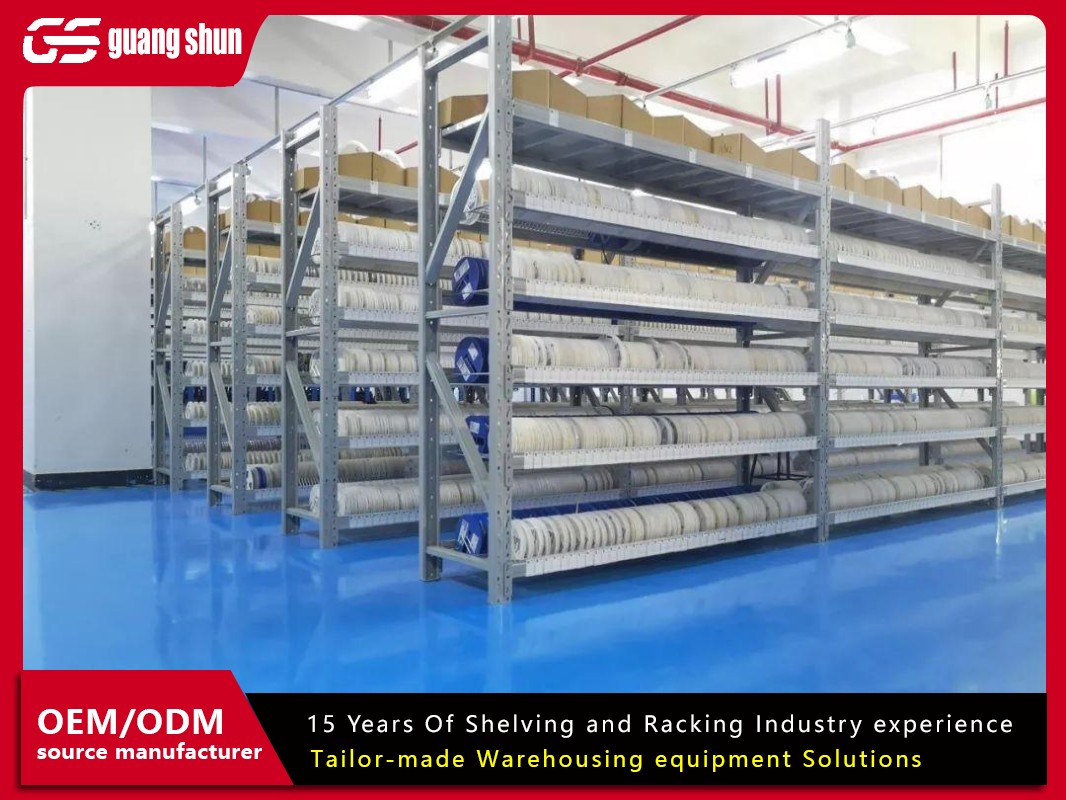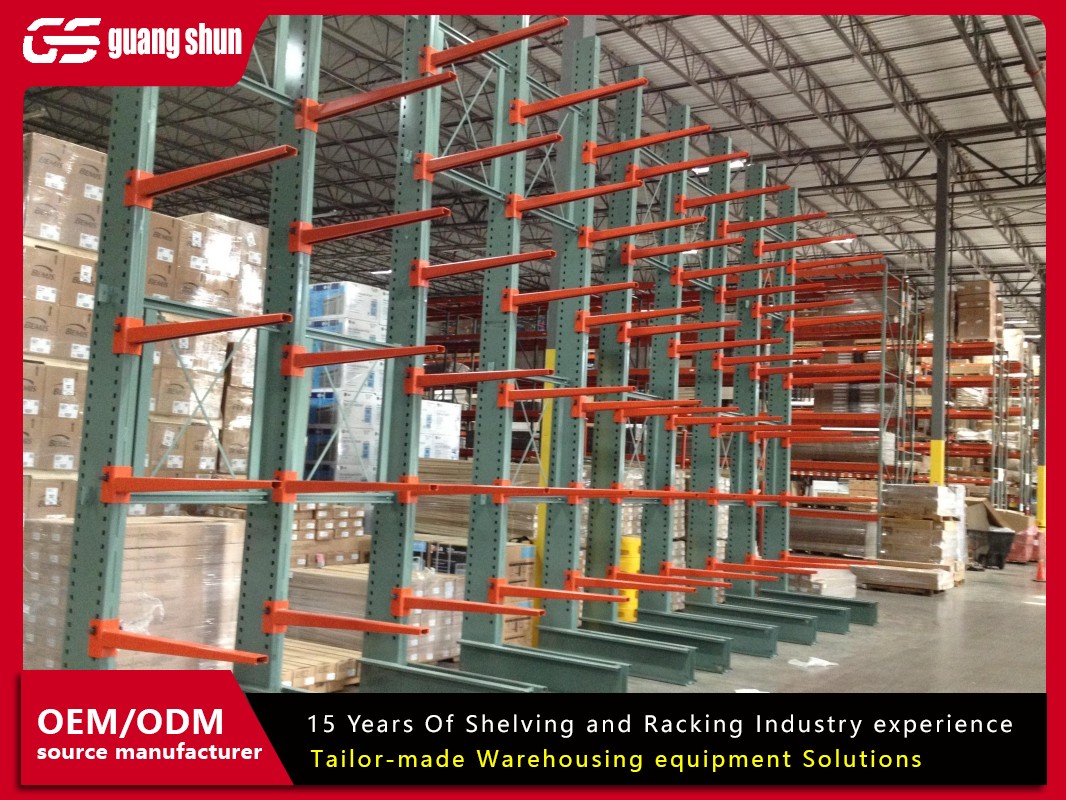When your warehouse operations demand strength and reliability, investing in the right storage infrastructure isn't just an option—it’s a necessity. For businesses handling substantial loads, from manufacturing parts to bulk retail goods, heavy duty pallet racking forms the backbone of an efficient, safe, and scalable storage system. Unlike standard shelving, this type of racking is engineered to handle significant weight and volume, making it a critical asset in industrial settings. But with various types and configurations available, how do you determine the right system for your needs? This resource breaks down the essentials—from types and selection criteria to cost factors and technical details—helping you make an informed decision for your facility.

Understanding Heavy Duty Pallet Racking and Its Core Components
At its core, heavy duty pallet racking is a structural storage system designed to store palletized materials in horizontal rows with multiple levels. The key components include upright frames, which are the vertical support structures, and beams, which connect the frames and support the pallets. The system’s strength comes from its robust design, typically made from high-strength steel, and its ability to be configured for specific load requirements.
What truly sets heavy duty racking apart is its load capacity. While light-duty systems may hold up to a few thousand pounds per level, heavy-duty versions can support loads ranging from 10,000 to 25,000 pounds per bay or more. This makes them indispensable for industries like warehousing, distribution, cold storage, and manufacturing, where storing heavy items like automotive parts, appliances, or industrial materials is a daily task.
Main Types of Heavy Duty Pallet Racking Systems
Not all storage needs are the same, and the market offers several types of industrial pallet racking to meet diverse requirements. Understanding the differences is the first step in selecting the right system.
Selective Pallet Racking: This is the most common and versatile type of heavy duty pallet racking. It provides direct access to every pallet, making it ideal for warehouses with a high number of SKUs. Its simplicity in design and installation makes it a go-to choice for many businesses needing a flexible and accessible storage solution.
Drive-In/Drive-Through Racking: Designed for high-density storage, this system allows forklifts to drive directly into the rack structure to place and retrieve pallets. It’s a type of high density storage racking that is perfect for storing large quantities of similar products, such as in cold storage facilities for food or beverage distribution. While it sacrifices some accessibility for density, it maximizes cube utilization.
Push-Back Racking: Another high-density option, push-back racking, operates on a Last-In, First-Out (LIFO) basis. Pallets are loaded onto nested carts on a slight incline. When a new pallet is placed, it pushes the previous pallets back. This system is excellent for pallet racking solutions that require better selectivity than drive-in systems without sacrificing too much density.
Pallet Flow Racking: Utilizing dynamic rollers and a gravity-fed system, pallet flow is a high-density, First-In, First-Out (FIFO) system. It’s often used for perishable goods or items with expiration dates. The integration of flow rails into a heavy duty structure allows for continuous product movement and is highly efficient for high-throughput operations.
How to Choose the Right Heavy Duty Racking for Your Operation
Selecting a heavy duty pallet racking system is a significant investment. A misstep can lead to inefficiencies, safety hazards, and unexpected costs. Here are the key factors to guide your selection process.
Assess Your Load Characteristics: The weight, size, and type of your palletized load are the most critical factors. You must know the maximum load per pallet and the overall load per shelf to determine the required beam and upright capacity. Don't forget to consider the dimensions of your pallets and any overhang.
Evaluate Your Inventory Profile: Analyze your SKU count and turnover rates. A warehouse with many slow-moving SKUs might prioritize selective racking for its accessibility. In contrast, a facility with fewer fast-moving SKUs might benefit more from the density of drive-in or push-back warehouse storage systems.
Consider Forklift and Operational Workflow: The type of forklifts you use (e.g., reach trucks, counterbalance trucks) will influence the required aisle width. Narrow aisles require specific racking equipment and compatible forklifts but can significantly increase your storage capacity.
Plan for Future Growth: Your industrial storage racking should be scalable. Consider a system that can be easily reconfigured, expanded, or dismantled as your business needs change. A modular design offers the flexibility to adapt to future inventory fluctuations.
Prioritize Safety and Compliance: The structural integrity of your heavy duty racking is non-negotiable. Ensure the design and installation comply with relevant local and industry safety standards. Regular inspections and proper employee training are crucial for maintaining a safe warehouse environment.

Cost and Investment Analysis of Heavy Duty Pallet Racking
The price of a heavy duty pallet racking system is not just the initial purchase cost. It's a total investment that includes several components.
Initial Purchase Price: This varies based on the type of system (selective is generally the least expensive per bay, while dynamic systems like push-back are more costly), the material grade, and the size of your order.
Cost of Ancillary Equipment: The total cost includes not just the beams and uprights but also essential safety accessories like pallet rack guards, row spacers, and decking. These items are critical for a complete and safe installation.
Installation Costs: Professional installation is highly recommended for heavy duty racking to ensure structural integrity and safety. This can be a significant line item but is vital for the long-term performance of the system.
Long-Term Value and ROI: While the upfront cost of a high-quality heavy duty pallet racking system can be substantial, its durability and efficiency gains provide a strong return on investment. Reduced product damage, improved workflow, better space utilization, and enhanced safety all contribute to the bottom line over time.
Technical and Structural Considerations for Maximum Safety
The engineering behind heavy duty pallet racking is what makes it capable of supporting immense weights safely. Key technical aspects include:
Frame and Beam Capacity: Upright frames are rated by their capacity per pair and their height. Beams are rated by their uniform capacity—the total weight they can support when evenly distributed. Never exceed these manufacturer-rated capacities.
Load Beam Deflection: All beams will sag slightly under load. Industry standards specify acceptable deflection limits to ensure the system's stability and the safety of the operations around it.
Seismic and Environmental Considerations: In certain geographical areas, warehouse racking must be designed to withstand seismic activity. Similarly, environments like cold storage facilities require racking made from materials that perform reliably at low temperatures.
Professional Design and Installation: A rack layout should be designed by a qualified professional who can calculate load requirements, determine the correct beam and upright specifications, and ensure the system is anchored and installed correctly. This is not a DIY project.
Frequently Asked Questions (FAQ)
Q1: What is the typical weight capacity for heavy duty pallet racking?
A1: The weight capacity for heavy duty pallet racking can vary significantly based on the design, beam length, and upright frame specifications. Generally, per-level capacities can range from 5,000 pounds to over 25,000 pounds. It is crucial to have a professional assess your specific needs and provide a system with certified load capacities that you must never exceed.
Q2: Can I reconfigure or expand my heavy duty racking system later?
A2: Yes, one of the key advantages of most selective heavy duty pallet racking systems is their modularity. Beams can be relocated to different heights, and additional bays can often be added to extend a row. However, it's essential to consult with a specialist before reconfiguring to ensure the structural integrity is maintained and that the floor anchoring and overall design can support the changes.
Q3: What is the difference between roll-formed and structural steel racking?
A3: Roll-formed racking equipment is made by bending sheets of steel into the desired shape (like a C-channel for beams). It is a cost-effective and common option for many applications. Structural racking is made from hot-rolled steel beams with a taller, I-beam-like profile, offering higher load capacities and greater durability for the most demanding industrial storage environments. Your choice will depend on your specific load and budget requirements.
Q4: Are there specific forklifts required for use with heavy duty racking?
A4: The type of forklift is often determined by your aisle width rather than the racking itself. Standard heavy duty racking with wide aisles can use counterbalance forklifts. For very narrow aisle (VNA) racking configurations, you will need specialized equipment like reach trucks or turret trucks. It's important to integrate your equipment and racking design planning.
Q5: How often should I inspect my heavy duty pallet racking system?
A5: OSHA guidelines recommend that warehouse storage systems be inspected regularly. It is best practice to have formal, documented inspections by a qualified professional at least annually. Additionally, forklift operators and warehouse staff should be trained to perform daily visual checks for any visible damage, such as dents, bends, or missing components, and report them immediately.







